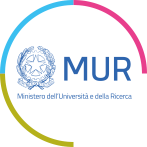Bando per assegno di ricerca
| Titolo del progetto di ricerca in italiano | Ligasi HECT E3 come bersagli terapeutici per SARS-CoV-2 e crisi respiratorie emergenti (HECORES) |
|---|---|
| Titolo del progetto di ricerca in inglese | HECT E3 Ligases as therapeutic targets for SARS-CoV-2 and Emerging Respiratory Crisis (HECORES) |
| Settore Concorsuale | 05 - Scienze biologiche |
| S.S.D | - |
| Settore Concorsuale | 06 - Scienze mediche |
| S.S.D | MED/03 - GENETICA MEDICA |
| Descrizione sintetica in italiano | "Lo scopo del progetto è dimostrare le proprietà antivirali dell'indolo-3-carbinolo (I3C) specificamente nel trattamento dell'infezione da SARS-CoV-2 e di altri virus a RNA come il metapneumovirus (hMPV). I3C è costituito da una sostanza chiamato glucobrassicina che si trova nelle verdure come broccoli, cavoletti di Bruxelles, cavoli, ecc. I risultati nel nostro laboratorio hanno dimostrato che questo composto esercita un’attività di replicazione diretta anti-SARS-CoV-2. Inoltre, abbiamo stabilito che si tratta di un’interazione diretta tra gli enzimi NEDD4 e WWP1 (membri HECT-E3) con SARS-CoV-2 che molto probabilmente favorisce la loro uscita attraverso l’ubiquitinazione. È quindi concepibile che i membri della famiglia HECT possano influenzare l’esito e la storia naturale di COVID-19 e analogamente l’infezione da hMPV a più livelli, influenzando anche i meccanismi di difesa antivirale autonomi non cellulari”. |
| Descrizione sintetica in inglese | The aim of the project is to demonstrate the antiviral properties of indole-3-carbinol (I3C) specifically in the treatment of SARS-CoV-2 infection and other RNA viruses such as metapneumovirus (hMPV). I3C is made up of a substance called glucobrassicin which is found in vegetables such as broccoli, Brussels sprouts, cabbage, etc. The results in our laboratory demonstrated that this compound exerts an anti-SARS-CoV-2 direct replication activity. Furthermore, we have established that this is a direct interaction between NEDD4 and WWP1 enzymes (HECT-E3 members) with SARS-CoV-2 most likely favoring their exit through ubiquitination. It is therefore conceivable that members of the HECT family may influence the outcome and natural history of COVID-19 and similarly hMPV infection at multiple levels, also affecting non-cellular autonomous antiviral defense mechanisms. |
| Data del bando | 04/11/2023 |
| Paesi in cui può essere condotta la ricerca |
Italy |
| Paesi di residenza dei candidati |
OTHER |
| Nazionalità dei candidati |
OTHER |
| Sito web del bando | https://pica.cineca.it/uniroma2/ |
| Destinatari dell'assegno di ricerca (of target group) |
Experienced researcher or 4-10 yrs (Post-Doc) |
|---|
| Nome dell'Ente finanziatore | università degli Studi di Roma Tor Vergata - Dipartimento di Biomedicina e Prevenzione |
|---|---|
| Tipologia dell'Ente | Public research |
| Paese dell'Ente | Italy |
| Città | ROMA |
| Sito web | https://pica.cineca.it/uniroma2/ |
| assegni.ricerca@amm.uniroma2.it | |
| Telefono | 0672592344 |
| L'assegno finanziato/cofinanziato attraverso un EU Research Framework Programme? | No |
|---|
| Data di scadenza del bando | 19/12/2023 - alle ore 00:00 |
|---|---|
| Come candidarsi | https://pica.cineca.it/uniroma2/ |
